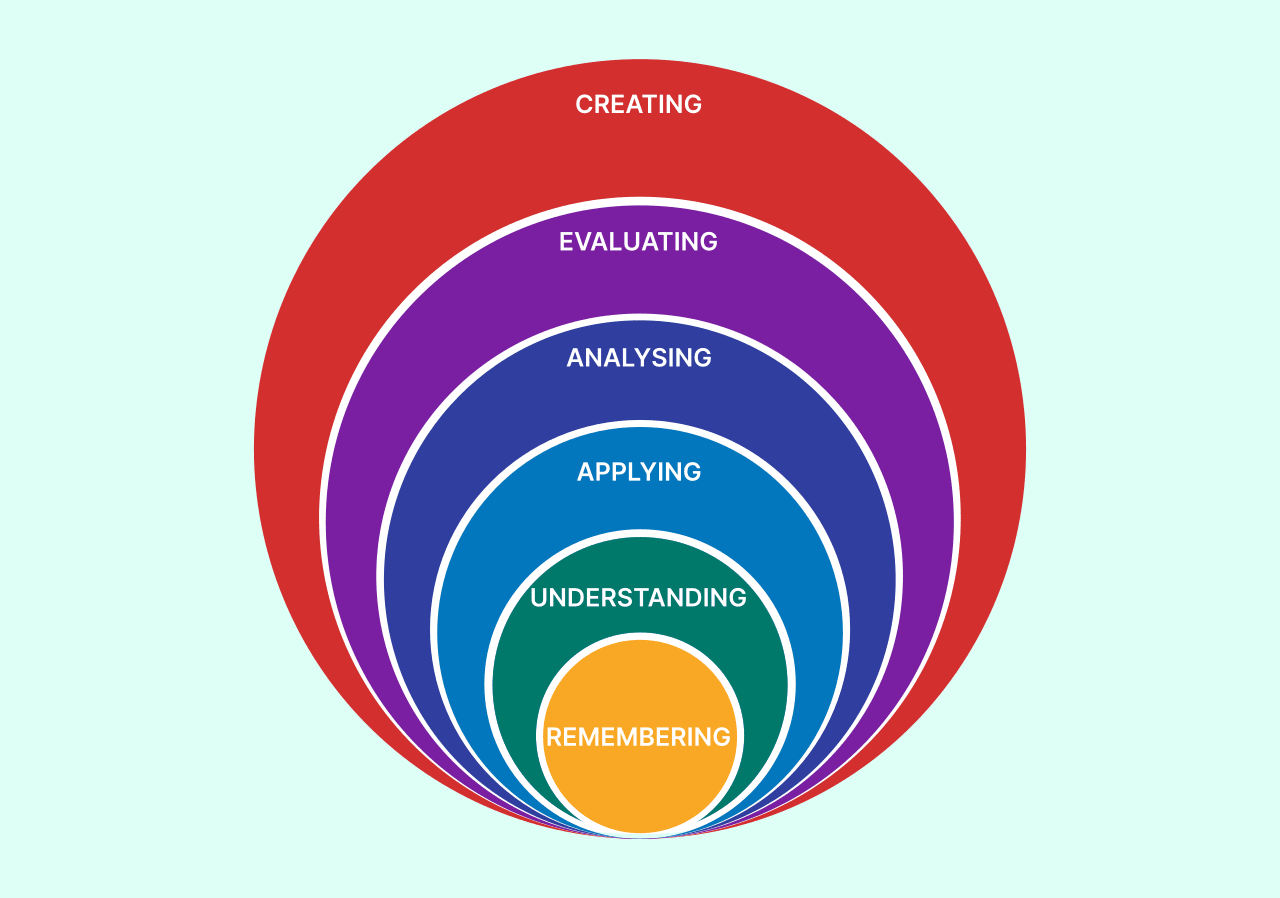What is Bloom's taxonomy?
This fundamental framework was conceived in 1956 by Benjamin Bloom with collaborators Max Englehart, Edward Furst, Walter Hill, and David Krathwohl in their work Taxonomy of Educational Objectives, and has since been adapted for use in classroom activities.

This fundamental framework was conceived in 1956 by Benjamin Bloom with collaborators Max Englehart, Edward Furst, Walter Hill, and David Krathwohl in their work Taxonomy of Educational Objectives, and has since been adapted for use in classroom activities. It has since been revised several times, most recently by Lorin Anderson in 2001.
💡 Lessons learnt: Learning is not attained by chance; it is sought for with enthusiasm and attended to with diligence
Bloom's Taxonomy classifies educational objectives into three levels: cognitive, affective, and psychomotor. The cognitive domain includes knowledge and understanding objectives. For example, an objective in the cognitive domain might be for students to know the definition of a certain concept. The affective domain includes feeling and emotion objectives. For example, an objective in the affective domain might be for students to feel comfortable and be in the right frame of mind to assimilate what is taught. Finally, the psychomotor domain includes objectives related to physical skills. For example, an objective in the psychomotor domain might be for students to demonstrate proper technique when using lab equipment.
Revised Bloom's Taxonomy
At its core, the Revised Bloom's taxonomy offers six levels of learning (from lowest to highest): Remembering, Understanding, Applying, Analyzing, Evaluating, and Creating.
Remembering: Retrieving, recognizing and recalling relevant knowledge from long-term memory. The student should be able to recall what they have learned about a particular topic.
Understanding: Constructing meaning from oral, written and graphic messages through interpreting, exemplifying, classifying, summarizing, inferring, comparing and explaining. At this level students need to comprehend the material they have learned so as not just to regurgitate what they have read/heard/seen but actually understand how all the pieces fit together in order for them to make sense of it all on their own terms.
Applying: Carrying out or using a procedure through executing, or implementing. Here students are asked to use the skills or knowledge acquired through learning in new contexts and situations; applying these ideas beyond rote repetition into actual problem-solving scenarios with confidence based on what they know.
Analyzing: Breaking material into constituent parts, and determining how the parts relate to one another and to an overall structure or purpose through differentiating, organizing and attributing. In this stage, students are required to dissect complex matters into smaller parts so as better understand essential relationships between each component within the whole piece being examined — thus recognizing patterns & trends which can lead to useful conclusions.
Evaluating: Making judgements based on criteria and standards through checking and critiquing.
Creating: Putting elements together to form a coherent or functional whole; reorganizing elements into a new pattern or structure through generating, planning or producing.
These six cognitive processes are based on Knowledge in the revised taxonomy.

Applying Bloom's Taxonomy in the classroom
For instance, in a series of computer literacy lessons teaching students about the computer keyboard, the first lesson might introduce them to the computer keyboard, then move on to a discussion of how an example of the keyboard interacts with the computer (Level 1 - Remembering), before asking them to explain the functions of the various keyboard components (Level 2 – Understanding). Students would move on to applying their knowledge and understanding of the keyboard, to begin connecting their keyboards to their computers and interacting with the computer using the keyboard, requiring them to encounter and solve any problems they may face (Level 3 – Applying). They would next research additional computer keyboard features like keyboard shortcuts (Level 4 – Analysing). Students may face additional challenges as the sessions go to evaluate best practices in using the computer keyboard and identify some areas for improvement (Level 5 – Evaluating). At the top of Bloom's taxonomy, students would be required to produce something wholly unique or creative, combining all they've learnt in the session (Level 6 – Creating).
Why Bloom's Taxonomy?
Today's educators have to make difficult choices about how to use their class time. Everything needs to come together perfectly, just like a puzzle. Bloom's Taxonomy provides educators with one of the earliest systematic classifications of the processes of thinking and learning. Applying Bloom's Taxonomy can promote greater understanding within each domain while providing better quality assurance when evaluating outcomes. Teachers can learn methods for using this comprehensive assessment tool effectively while gaining an understanding of the foundational principles and their relevance to today's education system. Teachers will be able to create dynamic learning experiences essential for students' growth.
In summary, Bloom's Taxonomy is a classification system for different levels of cognitive learning. It can help educators understand the level of understanding their students are at and provides a framework to plan goals and evaluate progress. Having this structure in place will help educators effectively teach and assess student comprehension, providing valuable insights into how students learn best.

Adiutor
Adiutor means "helper" - we do just that, by taking a load of your school administration and helping you focus on what matters most: the kids.
